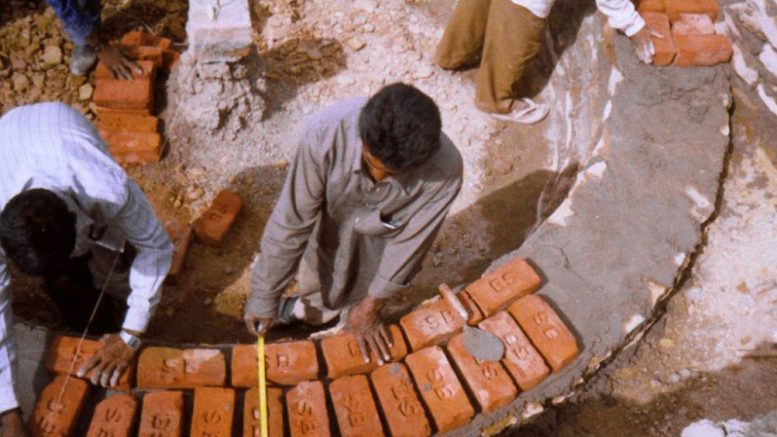One of the worst humanitarian crises that India has ever seen was the 2001 earthquake that happened in Bhuj, Gujarat, on 26 January. According to various reports, more than a million structures were damaged or destroyed, and 26 villages suffered losses of almost all their buildings. The scale of the disaster was enormous. Governments, private firms, and corporates started mobilising and facilitating help. The initial flow of humanitarian assistance in the first 2 weeks was focussed on emergency supplies of food and medicines as well as tents for people to stay.
This is the context to what happened next in terms of building India’s largest philanthropic coalition which would go on to build 5 thousand homes, 27 anganwadis, hospitals, and giving employment to many people ensuring that the craftsmen were able to sell their crafts in the US and bringing smiles back to hundreds and thousands of people who were earthquake-ravaged.
I used to work at Pepsico India at the time and my boss PM Sinha tasked me to brainstorm and develop an action plan which would look beyond the immediate relief measures and create a long term impact on rehabilitating the villages which had suffered so heavily in this disaster. We decided that forming a broader coalition with reputed business bodies and roping in more partners would enhance our reach and effectiveness. While doing an on ground need assessment study, we realised that besides the ongoing ground level efforts, a long term and impactful rehabilitation project would have to involve these major components – housing, fund sourcing, fund management and communication – an inherent strength of Pepsi as one of the best known FMCG brands in the world.
The lynchpin of the communications campaign was a film with the participation of our then brand ambassador Mr Amitabh Bacchan. We developed a 30 second film directed by Mr Santosh Sivan with a strong emotional appeal for funding. We approached all the TV channels like Fox, Sony, Star and many others who agreed to air this film on their channels free of cost.
Since we wanted to raise money from abroad, there were legal challenges to the effort as well. Therefore, we partnered with a multinational NGO operating in India. Additionally, although there were many voluntary donor organisations with funds available globally, they didn’t have credible organisations to partner with. We were able to provide them with a credible alternative. The final contours of the foundation were finalised during a meeting with Dr Amit Mitra, Secretary General, FICCI and PM Sinha, Chairman, Pepsico India. A very strong management committee was set up including top management from Pepsi, FICCI and CARE India. We targeted a fund corpus of 4 million dollars and the Pepsico foundation seeded half a million dollars into the fund. We also created a partnership with CARE India and that’s how FICCI-CARE, Gujarat Rehabilitation Project was created to create houses and infrastructure for the villages requiring relief. This would provide them with houses to stay, providing significant relief from the enormous challenge of not having a roof over their heads.
I must give full credit to Dr Amit Mitra, currently the finance minister of Bengal, who ensured that any lead which I gave him, for small or large organisations were always approached and followed up. We approached several well known donor organisations, Bill and Melinda Gates foundation, USID, the American Indian foundation and several others. The impact we created was that we were able to generate up to 26 Million dollar. This amount of funding, at this rate of speed is indeed rare in the history of private funds for disaster rehabilitation and reconstruction.
During the reconstruction of houses, we ensured that artisan and craftsmen from the villages were employed giving a boost to rural employment in the area. All the bricks for the construction were sourced locally, and people were able to generate employment by making bricks as well. We hired a construction team led by armed officers, hired CFO level auditors and got construction designs verified by earthquake specialist Dr Arya, confirmed that the design of the houses would withstand up to 9 richter scale earthquakes. In the course of rebuilding houses in the 26 villages. we even took fresh land for construction. We also interacted with the commissioner Mr Man Singh, who was the then rehabilitation commissioner and received an enormous amount of support from him. He told us we would also be able to work with the big Chief Minister relief fund. So, 30% of the funding came through the Chief Minister relief fund. As a project, we had started with half a million dollars of Pepsico Foundation funding, which multiplied itself 52 times to raise 26 million dollars and additionally received 30% more government funding.
I still vividly remember one Gujarat village in particular, Nani Charai. I had kept an amount of Pepsico Foundation funds exclusively for rebuilding one of them. I have had further occasions to travel to Kandla from Bhuj, and on that route when I see the Pepsi sign on a water tank in that village, it makes me emotional and I swell with pride, with the recollection of the best coalition project I did, which helped thousands of lives and brought smiles to so many faces.
The views and opinions published here belong to the author and do not necessarily reflect the views and opinions of the publisher.



Be the first to comment on "How India’s largest disaster rehabilitation programme was conceived and implemented"